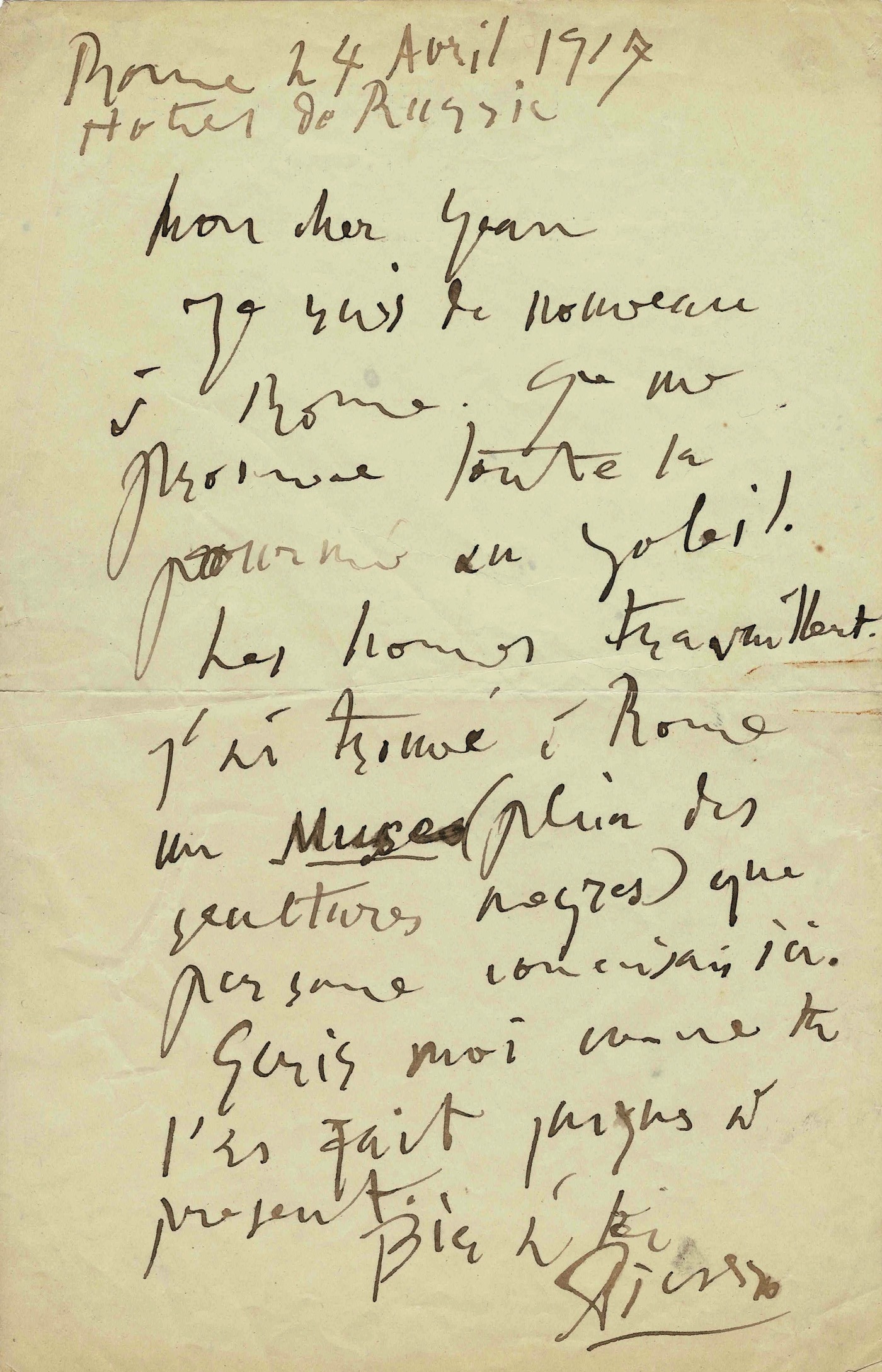Pablo Picasso (1881-1973)
Autograph letter signed to Jean Cocteau.
A large octavo page in brown ink. Unpublished letter.
Rome. Russia Hotel. April 24, 1917.
“I found a museum in Rome (full of Negro sculptures) that no one knew about here. »
Staying in Rome for preparations for the ballet Parade - written by Jean Cocteau - Picasso rejoices with his friend about the Italian dolce vita and the “negro sculptures” discovered in a museum in the eternal city.
________________________________________________________
“My dear Jean, I am in Rome again. I walk around in the sun all day. The men work. I found a museum in Rome (full of Negro sculptures) that no one knew about here. Write to me as you have done so far. Good to you. Picasso »
________________________________________________________
Pablo Picasso set down his suitcases in Italy for the first time, in Rome, in February 1917. Jean Cocteau had in fact asked him to accompany him to work on the production of the ballet Parade , inspired by one of his poems; Picasso was responsible for creating the sets. The piece was to be staged by the Ballets Russes of Serge de Diaghilev, whose company was in Rome.
This Italian journey (Rome, Naples, Pompeii) was an initiatory journey for Picasso who, in addition to the “negro sculptures” mentioned here, discovered, fascinated, the works of the Italian Renaissance in situ which inspired him to create a monumental painting: the curtain of scene from Parade , a true visual signature of the ballet, marking the beginnings of its neo-classical period (work now preserved at the Center Pompidou).
It was also in this same city of Rome that Picasso met the artist Olga Khokhlova who was rehearsing the role of Félicita in the studios of Piazza Venezia. Seduced by her beauty, the artist began an assiduous courtship of the woman who became his wife in July 1918.
Finally, note that Picasso had painted a few days previously, in Rome, on Easter Sunday 1917, the portrait of his friend Cocteau (also kept at the Center Pompidou).
Provenance: Ange Teodori Collection, then private collection.

